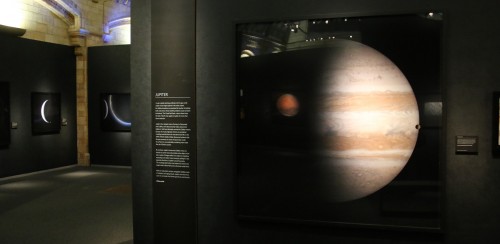Astronomy is a curious science, being both deeply technical, but also eye-wateringly beautiful. Some of that beauty gone on display at the Natural History Museum.
We have long gazed upon the stars with a mixture of wonder at the scene painted above us, as well as the innate curiosity that is mankind. The best telescopes gave hints at the planets, but it wasn’t until mankind reached out with its ambitions and sent far flung planet probes that the wonder of the solar system came so vibrantly to life.
The probes delivered science by the bucket-load, but if scientific results are measured by public response, then astronomy also delivers by the bucket-load.
Recent events such as the rovers on Mars or the flypast of Pluto show that the wonders of the solar system are both delightful to behold, and able to capture the attention of the public like almost no other branch of science can achieve.
What is curious about the photos we see though, is that they are estimates of what is out there. The probes are scientific instruments, and their photography is rarely in full colour, but B&W shot through filters, or not even in the visible spectrum at all.
When photos are published, they are composite estimates of what distant worlds look like, and it often takes an artists eye to turn the ultraviolet and infra-red images into something rather more human.
It is a selection of photos that have been composited by the artist, Michael Benson that have now gone on display in the Natural History Museum.
Some are almost too familiar to warrant attention, from the vast photo of the Earth, which showed mostly not-earth, in the form of oceans and clouds, to the moon and the planets.
Landscapes of Mars are almost unique in having been taken from the surface, and with their empty desert canyons, look more like Earth than the photos of planet earth did.
What makes the photos so enthralling though is a mixture of the size of the photos — the great planets being produced is scales far larger than most of us are used to seeing reminds the heart what the head knew already, that these are huge planets. At last the photos reflect that.
They are also delivered with a sharpness and depth of colour that never comes out when looking at NASA photos online or in a magazine.
There is supposed to be a soundtrack by Brian Eno, but it was not something I was able to locate, and an audio soundtrack played through mobile phones came across as short clips from The Sky at Night.
Better to simply sink into the depths of the photography, and just for once, leave the science to another day.
The exhibition, Otherworlds is open at the Natural History Museum until 15th May. Entry is £9.90









